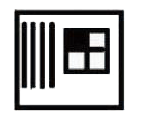The Replacement And Regional Continuity Model
Step by step video & image solution for The Replacement And Regional Continuity Model by History experts to help you in doubts & scoring excellent marks in Class 11 exams.
Similar Questions
What do you know about Replacement and Regional Continuity Models?
View SolutionChoose the correct alternative from the clues given at the end of the each statement :
An atom has a nearly continuous mass distribution in a ........ but has a highly non-uniform mass distribution in .......
(Thomson's model/Rutherford's model)View Solution
Knowledge Check
- Question 1 - Select One
Which of the option figure will replace the question mark (?) to
continues the figure series given below ?
 A
A B
B C
C D
D
- Question 2 - Select One
Which of the option figure will replace the question mark (?) to continue the figure series given below?
 A
A B
B C
C D
D
- Question 3 - Select One
(A) according to electromagnetic theory an accelerated particle continuously emits radiation.
(R) according to classical theory, the proposed path of an electron in rutherford atom model will be parabolic.Aif both assertion and reason are true and reason is the correct explanation of assertion.Bif both assertion and reason are true but reason is not the correct explanation of assertion.Cif assertion is true but reason is false.Dif both assertion and reason are false.
Conduction process can be explained on the basis of both atomic model and kinetic model.
View SolutionReplace the words if needed and choose option 5 if no replacement is required. The Fashion business sells their products through billing and advertising with the use of boorish developed really thin models.
sells - produces
Billing - Branding
Boorish - BarelyView SolutionChoose the option to replace ? to continue the pattern in given number series, 6, 12, 21, ?, 48,
(a)33
(b)38
(c)40
(d)45View SolutionA charged particle would continue to move with a constant velocity in a region wherein,
View SolutionA charged particle would continue to move with a constant velocity in a region wherein, which of the following conditions is not correct?
View Solution

